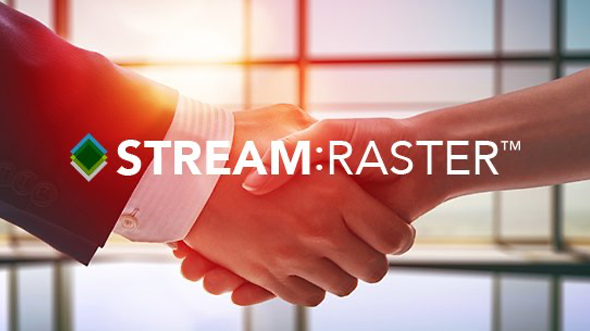
BLOG
—
Evaluating Geospatial SaaS Platforms to Meet Business Needs
As traditional, back-office geographic information systems (GIS) have moved into the modern web world over the last two decades, new geospatial solutions have emerged. This migration was characterized by three recognizable themes: the liberation of capabilities and data, a focus on more fine-grained services and broad cloud adoption.
Today, the modern geospatial platform can exist partially or completely in one or more clouds. It is composed of a variety of products and services that are a combination of purchased or deployed at a low cost or no initial cost from proprietary vendors or open-source projects.
To help you understand your options, let’s survey the geospatial software-as-a-service (SaaS) platform landscape. These details will help you make an informed decision about which solutions best align with your business needs.
Full-Factory GIS Solution
A full-factory GIS solution is a SaaS platform that provides comprehensive services to support the demands of an enterprise GIS shop. What separates a full-factory GIS from the longer list of point or industry solutions is the completeness of the toolkit. For example, geoprocessing is essential to traditional GIS and remains central to a full-factory SaaS offering, but it is not something you would necessarily expect to find in a more focused SaaS solution.
As a result, a full-factory solution presents GIS professionals with a toolbox to tackle potential problems. Its capabilities include hosting geodata, maps, services and geospatial apps; RESTful and streaming (“real-time”) data services; spatial processing and analytics; content sharing; and discovery services.
These solutions come with the prospect of replacing an on-premise enterprise GIS with a no-maintenance SaaS solution. You probably only use 20% of your enterprise GIS, so why not switch to a SaaS platform and only pay for what you use? That’s attractive to a typical GIS “buyer” when you know what a typical enterprise GIS shop is traditionally expected to provide to its customers and stakeholders, whether internal or external.
That GIS shop has people, a predictable technology stack and work to be done.
- Personnel: GIS coordinator/administrator, one to two GIS analysts/developers, five to 10 GIS technicians
- Technology: N-tier architecture system, often Esri ArcGIS Enterprise, which includes a database, server tier, thin and thick clients, and mobile devices; optionally includes open-source alternatives in the tiers
- Products and services: Map services, web and mobile applications, hardcopy maps and public alerts
The advantages of migrating from on-premises to a SaaS solution include lower maintenance costs, flexible infrastructure, risk mitigation with off-site data and higher uptime, to name just a few.
What’s the downside? Since full-factory solutions offer a wide variety of services, they tend to be difficult to build and expensive to maintain. But SaaS providers take this on and pledge to keep costs low due to economies of scale. In this category, there are a handful of players, including ArcGIS Online, Carto, Hexagon Geospatial and Azure Maps. ArcGIS Online does the best job of attempting to replace on-prem enterprise GIS. Google had a solution pre-2016 with Maps Engine, but it has been discontinued. Its capabilities are now incorporated into a few Google services, but lack the cohesion to be its own platform.
A full-factory SaaS solution sounds good in theory, but we think that most people don't need a four-season clothing collection just in case there's a hurricane, a sunny day, a snowstorm and a hundred-year flood. In short—it's too much. Instead, consider a smaller, custom closet that contains one or more of the point or industry solutions below.
Point Solutions
Point solutions, in contrast to full factory, are narrower in scope and aim to solve a smaller set of geospatial problems. Instead of purchasing a giant enterprise GIS monolith or pursuing the same model in the cloud, it often makes sense to decompose your actual needs and assess each business case individually. The industry has recently exploded with point solutions to offer fit-for-purpose/best-in-breed options. Here are just a few:
- For location (geocoding/maps/routing): Google Maps Platform, LocationIQ, SmartyStreets
- For geofencing: GeoAwareness, Radar.io, Proximi.io
- For satellite/aerial/drone imagery delivery (raster): STREAM:RASTER
- For analytics/ML/IOT: Raptor, UP42
- For data hosting and mapping: Mapbox
A past blog post, “Dissecting the Layers of Mapping APIs,” provides more information about some of these. If geospatial is only part of what you do or if something in your current monolith rubs you the wrong way, take a look at these point solutions and pay for only what you need.
What the Future Holds: Industry-Focused Platforms
I expect future geospatial SaaS platforms to include more and more domain-focused solutions that are customer- and user-oriented, but also offer the extensibility, interoperability and capabilities you’d get with a custom-built, cloud-based solution. Domain-focused platforms aim to solve a broad set of problems specific to each industry, while abstracting away the core geospatial parts. These platforms often present a thin veneer tailored to your business case and can bring the full force of the cloud if and when you need it for things like streaming, big data analytics and machine learning (ML). Here are a few emerging examples:
- For ride-hailing: rideOS
- For precision agriculture: Gro Intelligence, Farmobile
- For telecommunication/utility: IQGeo
Next Steps
If you currently own a full-factory GIS system, examine which features you’re actually using and assign them to point solutions or industry-focused platforms. From there, you can whittle away at your dependence on and payment for that full-factory, monolithic solution. If you currently have a portfolio of point solutions that you’ve pieced together, survey the ever-changing marketplace of industry-focused platforms to see if there’s one turnkey solution that meets your needs. Keep in mind that with the confluence of real-time data streams, artificial intelligence and ML, geospatial SaaS platforms will continue to grow and adapt to support the synthesis of industry-specific datasets and capabilities—so demand those things of your current systems.
If you need some guidance on your way, we are here to help.
Geospatial Cloud Series 2020
July: Partnerships Expand Woolpert's Geospatial Footprint, Capabilities
August: Evaluating Geospatial SaaS Platforms to Meet Business Needs
September: Remote Sensing Data at Home in the Cloud
October-November: With Great Power of the Public Cloud Comes Even Greater Responsibility
December: Series in Review: Where the Cloud Intersects with Geospatial



